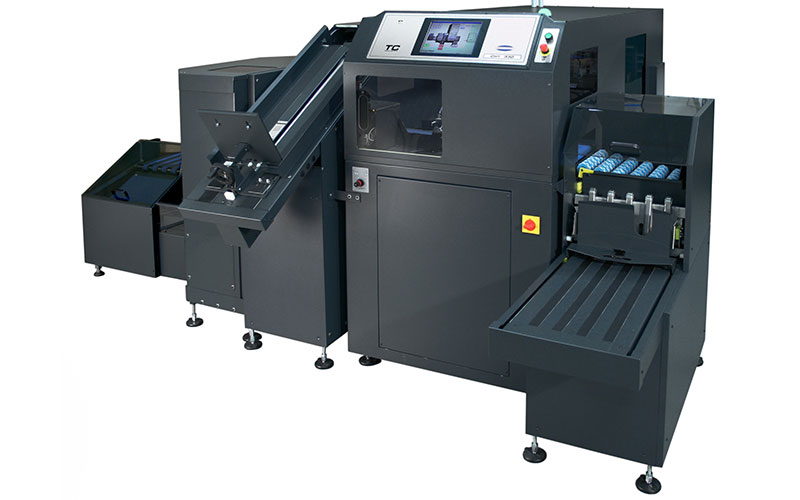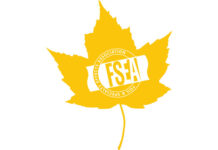Britt Cary, vice president of marketing and sales, The Challenge Machinery Company
Book manufacturers understand the importance of a good final trim to a book. Although few customers will ever take notice or fully appreciate the clean, straight, square cut of the book in their hand, book manufacturers know that a quality trim of the book is critical. A trim cut that is not square, or straight or doesn’t match the print design of the cover becomes quickly noticeable by the consumer, and there is nothing more costly than to scrap a book at the final trimming process when all of the costs of printing and binding have been spent. Selection of the right three-knife trimmer for individual businesses and their unique workflows is more important than many anticipate. So, how to know which one to choose?
The first and most obvious consideration is the average run volume of the titles being trimmed. If a bindery is handling more of the traditional publication run sizes, ranging from a thousand to tens of thousands of copies, it will need to find a trimmer that is built to handle that amount of volume. These machines typically require manual set-ups for the knife locations and clamping pad sizes, but with the volumes they are made to handle, the time it takes to set up the trimmer is not as important as making sure the set-up is done correctly and the trimmer consistently will perform to those settings. Consider only brands that are well known in the marketplace and have a proven history in manufacturing quality three-knife trimmers.
With the revolution of digital print and its capacity to economically produce smaller run sizes, the digital book manufacturing process demands more diverse capabilities from the three-knife trimmer. With the run sizes being much smaller – such as 100, 20 or even one – the demand for automation becomes critical without jeopardizing the quality of the trim. With digital book manufacturing systems, production speed capability from the trimmer is less important because of the slower performance speeds at which the digital print engines operate. In most cases, the trimmer will be waiting for the next book to be presented to it. This increases the importance of other features that should be considered in choosing the book trimmer.
Automation – the more the better
If run size counts are very small, every operator intervention that is required to change parameters for the next job is going to quickly become a bottleneck in the workflow. Areas to take note of in this topic of automation include the following:
Required specifications for set-up: To successfully handle and trim a book block, the three-knife trimmers generally need to know several specifications of the job. These specifications can include the starting book block dimensions (length x width), finished book dimensions (length x width), book block height (thickness) and the location of the required cuts in reference to the edges of the starting book block. The more dimensions that need to be inputted to set up the machine, the longer the process will take. Some book trimmers automatically can detect many of these required specifications as the book enters the machine so that only three dimensions need to be inputted to the trimmer from the operator or from stored memory. This makes it simpler and faster for the machine operator to program for each job.
Book Clamp Pads: In an effort to ensure a book lays flat before it is cut, a center book pad is a device in three-knife trimmers that helps prepare the book before cutting, especially for larger books. Since book trimmers have a range of books sizes that they can trim (compare those specs as well), some manufacturers will recommend different-sized center pads to be manually changed when the size change is significant between jobs. If the clamp pads need to be changed out between jobs, that is downtime that will hold up the trimmer. The smaller the quantity of the run, the more often the trimmer will be down. Look for a trimmer that does not require changes of the clamp pads.
Barcode reading capability: Choose a trimmer that has a barcode reading system either included with the standard machine or as an option at additional cost. Since the job requirements for cutting books are uniform in the number of specifications needed, it is easier to take advantage of the benefits that a barcode reading system can offer. If a trimmer only requires a few dimensions to set up for a job, the full job requirement can be included in a simple barcode and printed to the cover of the book. As the book enters the machine, the barcode can be read, sending the needed inputs to the trimmer to set itself up. Such automation will be a feature businesses will want to take advantage of at some point, even if it is not a goal with the initial acquisition.
Flexibility
Potentially consider the flexibility of the three-knife trimmer in regard to how it fits into book production flow. While researching the costs associated with three-knife trimmers, consider how the investment will be able to adapt to changes that may occur to the shop. For example, when first deciding to buy a machine, investors may want the trimmer as a standalone system. They might plan to use two or three different binders to feed books to the trimmer or they also may have a desire to let the glue cure overnight in newly made books before they are cut. In either case, a book feeding system with a stacking delivery on the back of the machine will let the trimmer run unmanned after a pile of books is loaded by the operator.
However, maybe next year the investors decide they want the trimmer inline with a binder so the books come out of the system already trimmed. Or they may decide they want to feed the books directly from one binder but manually introduce books from other sources as well. Select a system that can adapt to the needs in the shop as they change. Try to avoid having to buy an altogether different trimmer in three or five years. Select a trimmer that can adapt to the business’ needs instead of the business adapting to it.
Other trimmers
There are some quality book trimmers available in the market that are not technically three-knife trimmers because they utilize only one knife to cut the books. These three-sided book trimmers rotate the book block for each cut. Since these trimmers need to cycle three times for every book block presented to them, their capacity volumes are about 50% or less than the true three-knife trimmers. Having said that, the quality of their cut performance is very good, and they are, for the most part, capable of keeping up with the production volumes that are typically presented by one floor-model single-pocket perfect binder. The considerations of automation, barcode capability and flexibility previously mentioned will apply to selecting one of these single-knife machines as well.
Britt Cary is the vice president of marketing and sales for The Challenge Machinery Company – a manufacturing company that has supplied cutting and print finishing equipment to the printing industry for more than 130 years. His experience includes multiple senior management positions in manufacturing, and he has served multiple roles in his 24-year tenure with Challenge. For more information, contact Cary at bcary@challengemachinery.com or visit www.challengemachinery.com.





